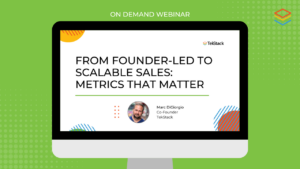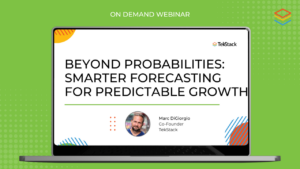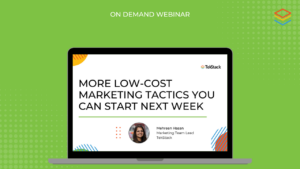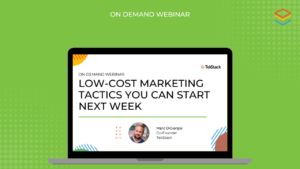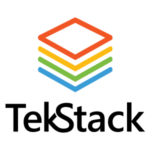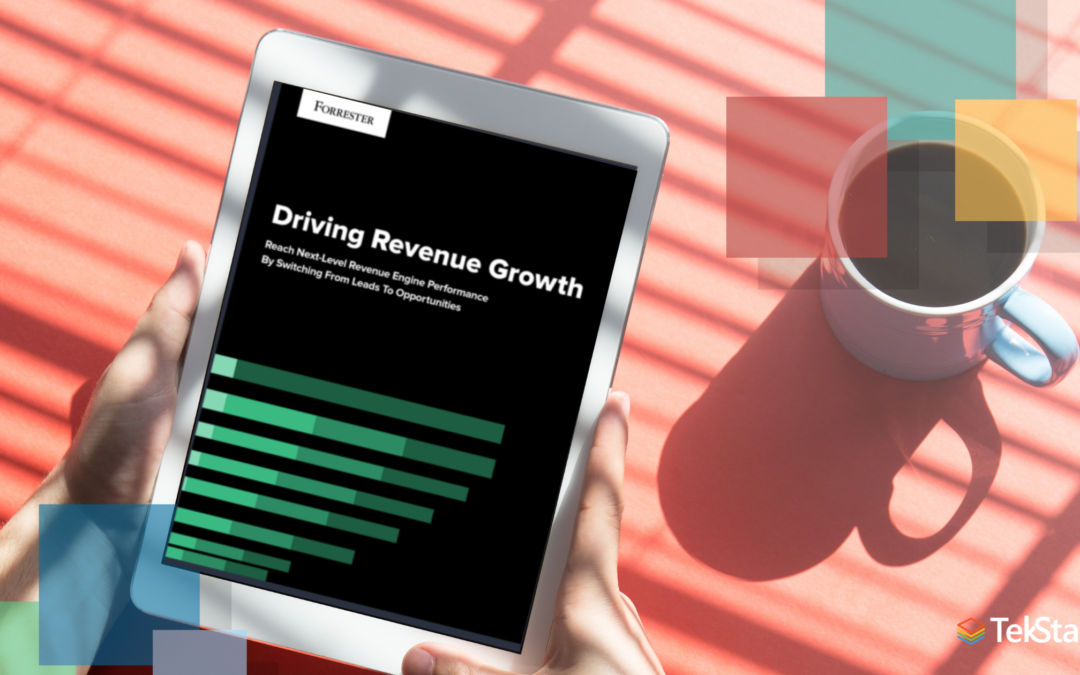
About a year ago, in May 2021, Forrester published an update to the B2B Revenue Waterfall. Previously known as the SiriusDecisions Demand Unit Waterfall, this was the first update following their acquisition of SiriusDecisions, its timing coordinated with Forrester’s B2B Buying Study. According to Forrester, the updated model promises to:
Help firms accelerate opportunity development and revenue growth. Using the new model, firms can drive new pipeline and revenue opportunities in current accounts, turn buyers into advocates, and fuel demand generation activities such as attracting net new buyers’ attention and accelerating deal closing.
The history of B2B Revenue Waterfall
The 2021 version is a massive improvement from the original 2006 Demand Unit Waterfall from SiriusDecisions, the one that most B2B technology companies still reference today. The first version was updated in 2012 with the advent and adoption of marketing automation systems responding to content-based, inbound-centric marketing programs. It was those versions that frankly popularized the acronyms like AQLs, MQLs, SQLs, etc.
In fact, it was in 2017, the previous version of the Demand Unit Waterfall, which made a huge step forward. It did a great job in B2B Tech settings, helping to integrate re-emerging concepts around ABM; and dealing with the fluidity of the B2B buying journey. (Spoiler alert: B2B software buying cycles almost never go in a straight conversion path!)
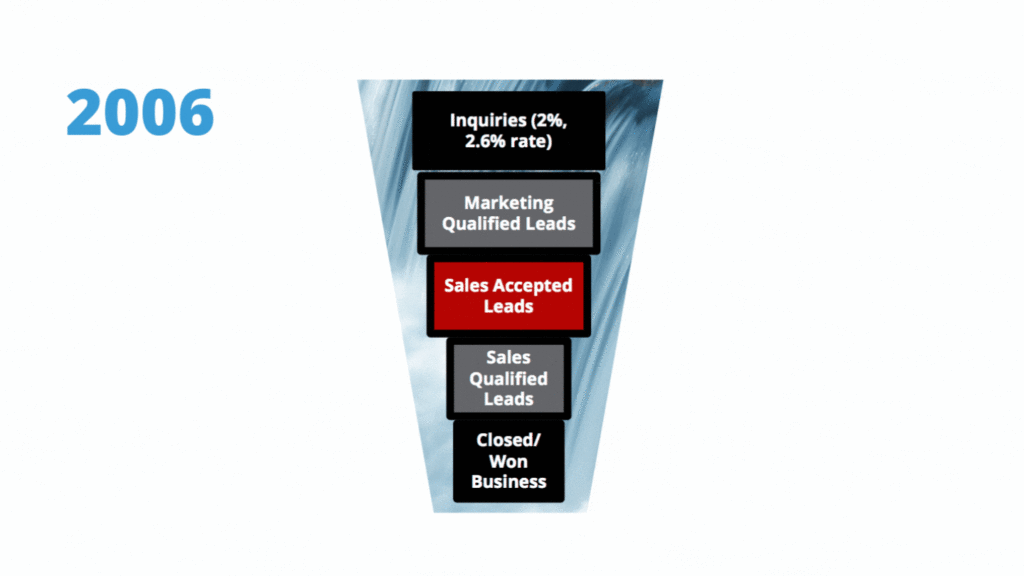
Forrester’s B2B Revenue Waterfall over 15 years of evolution
Why is it relevant for B2B tech companies today?
Some hard facts:
a) Sales and Marketing departments are not always aligned as closely as they should be.
Compensation, misalignment on conversion metrics, budget fights, human nature, and lack of real attribution data adds to this. Now layer on disparate tools and antiquated processes; most companies are wasting valuable time and money on sales and marketing programs; and are not focused on the big prize.
b) Our sales and marketing processes are ‘us’ centric, not buyer-centric.
Buyers want more information, little to no sales friction, value-add from every engagement, and more self-service options. Most sales and marketing teams are unwittingly creating barriers to engagement.
c) Buyers are not people they are a group of people.
The buyer is actually a group of buyers that are made up of deal influencers, decision-makers, and economic buyers. For complex products or services, it’s almost never one person.
d) The Buyer Journey is not a linear path
The buyer’s journey is not a linear path. It comes in and out of engagement with your sales and marketing team over a period of time. You may be the right product and at the wrong time. The buying group may have members that come in and out over that period of time too.
What we like about it
a) Simple & Elegant
The 2012 version was a complex flowchart that was confusing and difficult to implement in most marketing and CRM tools. The 2021 version is massively simplified and uses a fewer number of categories that are more human and help sellers and marketers understand where a buyer is in their engagement with your company.
b) Focusing on Buying Groups, not leads
Forrester remarks on what we all know to be true:
“In many cases, organizations already receive multiple leads from the same account, each of which is demonstrating interest in the same solution. However, marketing automation platforms don’t make the connection between those individuals. This means marketing can’t see, for example, that one potential opportunity is represented by multiple buying group members while another potential opportunity is represented by only one. This lack of insight severely limits the performance of the entire demand management process, including marketing, revenue development, sales, and the customer organization. Once an organization shifts its focus from leads to opportunities with buying groups, it often sees a substantial improvement in performance”.
This fact is supported by Forrester’s B2B Buying Survey which found that “In B2B, the buyer is nearly always a group of people working together rather than an individual acting alone”.
c) Recognize multiple selling opportunities per account
Forrester recommends a classification process for targeted opportunities that can provide valuable insight for organizations looking to unlock whitespace or wallet share; or better understand win rates across solutions areas.
d) Various approaches to Adoption Offered
A lot of this insight would require a paid subscription to Forrester, but the “Driving Revenue Growth” report does realize that this model may need to be adapted in order to be successful, and they offer a pragmatic approach to adopting some of these concepts, not expecting companies to automate each step of the process with their existing SOPs or technology stacks.
What parts of the Forrester B2B Revenue Waterfall have TekStack built-in?
TekStack went all-in with the predecessor from 2017. It’s well aligned for B2B technology companies, and we recommend this approach for all our customers. In fact, at this point we won’t implement TekStack any other way as all of our product functionality and out-of-the-box reporting is completely aligned with the principles offered by Forrester’s B2B Revenue Waterfall. Here are some of the pieces we built into TekStack offering customers a complete out of the box experience:
a) Customer Lifecycle Stages at the Account Level
We agree that the Lead object has too many limitations, and doesn’t provide the insights that our customers need. We agree on the concept of buying groups making buying decisions. Our thinking is that this approach is best applied at the Account (not the lead, contact, or opportunity) so that you can see the stage the Account is at in its buying journey with you.
b) Incorporate Scoring models and Intent signals
We incorporate behavior-based scoring models to move accounts forward in their journey with your sellers. If they fill in a form, open or click emails, and agree to a meeting; these are all great signals that should move an account through the various stages. So is the intent data that you may be acquiring from various data sources. So often, that great data is disconnected from the sellers who should be prioritizing action.
c) Automating Account Stage Changes
Using a combination of events (like Opportunity Creation, Opportunity Closed Won, or Closed Lost); or intent signals from lead scoring; we move the account stage through the lifecycle. Every time there is a change, we record the date and time duration.
d) Capturing Nurture & Re-Prospect Events
When an account moves down the funnel but then moves back up because of an opportunity loss, or they were unqualified; we change their status and record the reason for the event. This is invaluable for sellers going back into the account in the future, or for marketers who should be nurturing these educated buyers differently from first-time buyers.
e) Categorizing Opportunity Types
We automatically identify opportunities for New Customers from Existing Customers; and separate Renewal opportunities. Seems like common sense but it’s surprising how few companies have a standard approach to managing renewals or categorizing existing customer opportunities.
f) Key Metrics
All the key velocity metrics are prescribed and pre-built:
- Funnel Breakdown. How many accounts are at each stage.
- Funnel Conversion. How many accounts moved to prioritized, qualified, pipeline each month; and what was the conversion ratio between each stage.
- Opportunity Analysis. Deal size by opportunity type (new, existing, renewal), Opportunity Creation by type, and Win Rate by type.
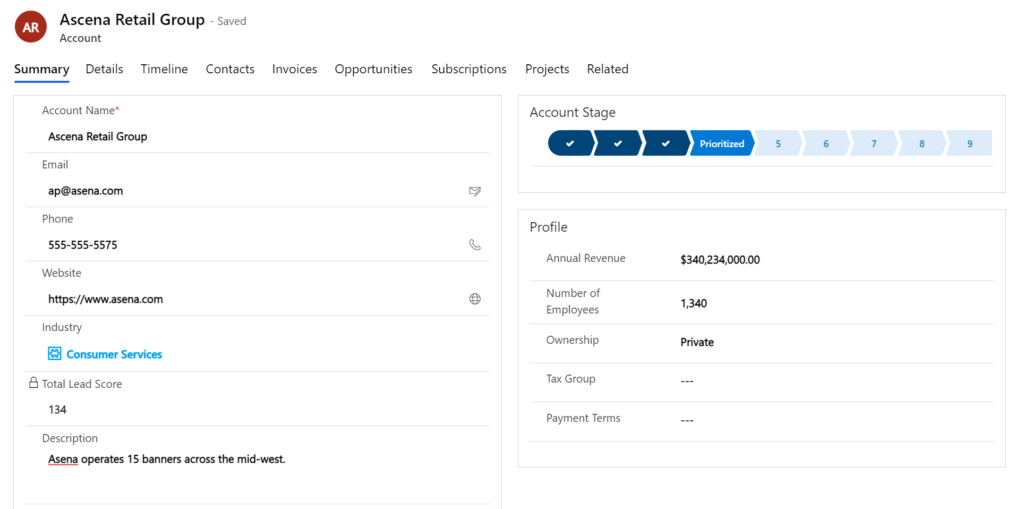
TekStack form showing stages of the customer lifecycle aligned to Forrester’s B2B Revenue Waterfall
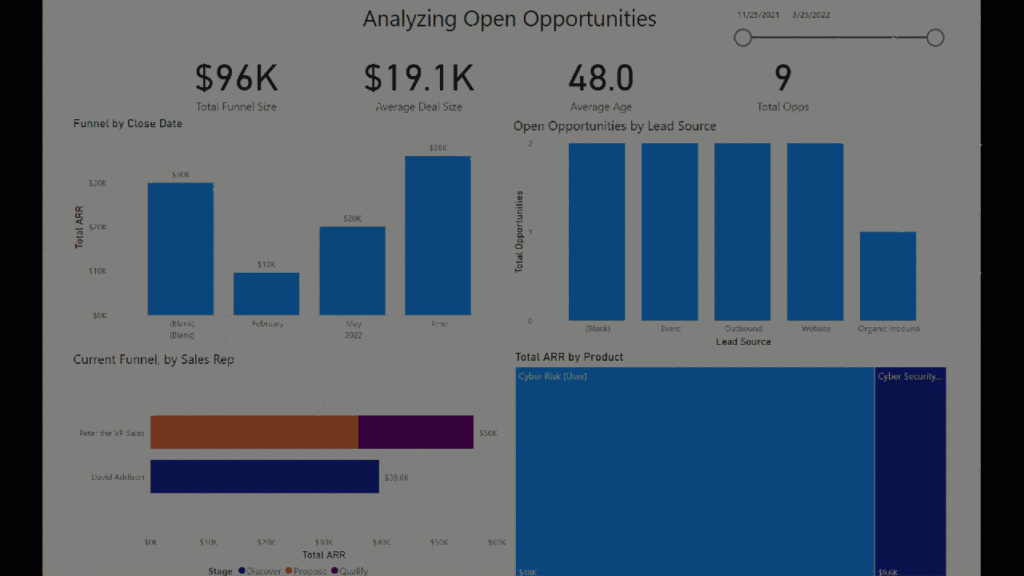
TekStack reports showing metrics aligned to Forrester’s B2B Revenue Waterfall
Conclusion
- TekStack fully embraces Forrester’s B2B Revenue Waterfall approach.
- B2B technology companies often struggle to define a marketing and sales process, this is the best one for companies that have a higher value buying process that tends to include multiple decisions makers.
- Incorporate behavior scoring to drive action on accounts that are showing interest
- Dump use of the lead entity as it’s often the source of poor data hygiene and lacks the account-centric insights your sellers need to navigate buying groups.
- Drop counting and measuring marketing’s performance on MQLs. Focus on an integrated funnel where marketing is measured by marketing-led sales opportunities.
- Analyze key opportunity metrics like win rate, deal velocity, and deal size differently from new vs existing customer opportunities.
- Use opportunities for renewal management but keep it separate from the big prize of the new logo and back-to-base bookings.
Interested to find out more? Talk to us to book a demo!



